As comet C/2023 A3 (Tsuchinshan-ATLAS) continues to stun in new photos, we eagerly await its arrival in the Northern Hemisphere to witness the spectacle with our own eyes. But when will it happen? Where do we look? And what should we expect? Well, we have plenty of good news in that regard.
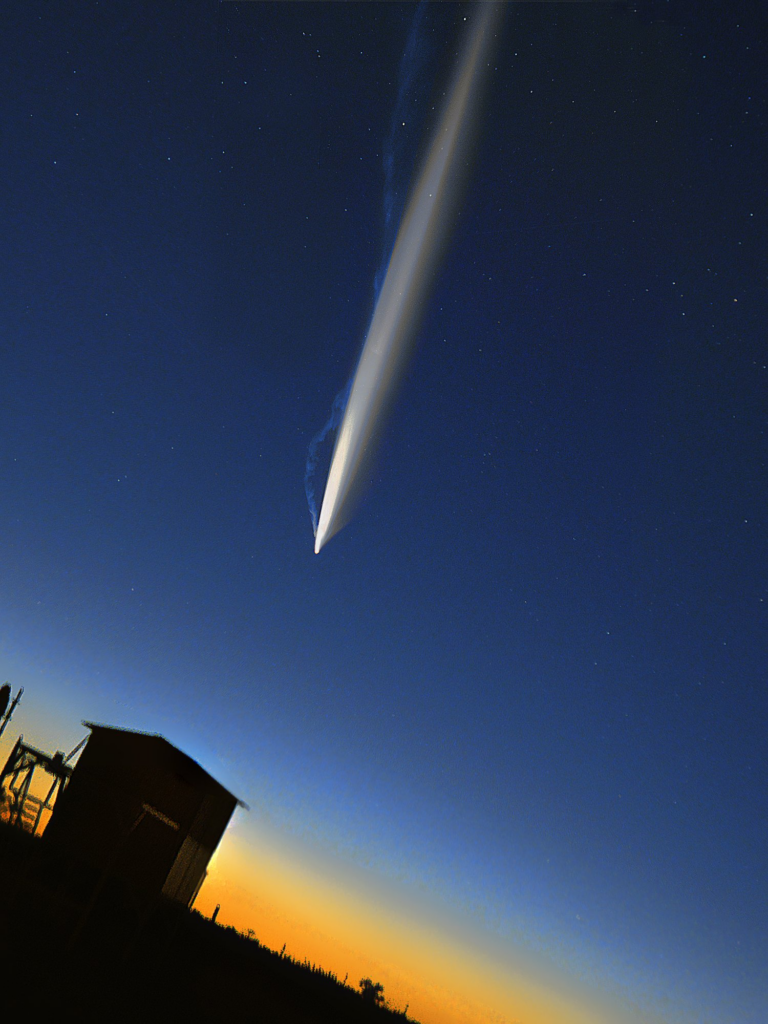
Where Is the Comet Now, and Who Can See It?
Comet C/2023 A3 (Tsuchinshan-ATLAS) moves in an open parabolic trajectory — once it completes its lap around the Sun, it will then leave the Solar System forever. Which means that this is our only chance of witnessing the tailed traveler. Its orbital path also puts it in the Sun’s glare at two distinct points, obscuring the comet for observers on Earth.
The first instance occurred in mid-August and lasted until mid-September, though the comet was still fairly dim at the time. The second such occasion is happening right now. On October 7, 2024, the SOHO solar telescope captured its bright display as the comet entered the coronagraph’s field of view. The instrument that tracked it is LASCO C3, the Large Angle and Spectrometric Coronagraph that studies the Sun and near-Sun environments. Since comet C/2023 A3 is currently at a 5° angle of separation from the Sun, we are only able to observe it with space instruments.
Despite this, Marco Goiato managed to catch the comet on October 7, 2024, and in broad daylight to boot. The resulting image only shows a tiny, faint dot in the sky, but it’s still undoubtedly our comet.
A more detailed daylight photo was taken by Slovak photographer Petr Horalek on October 8, 2024. He combined composition techniques to capture the Sun and the comet in the same frame, dimming the sunlight with a special density filter. The image you see below is a composite of 62 frames taken at very short exposures of 1/6400 seconds. And as an added bonus, we can even distinguish the Sun’s spots.
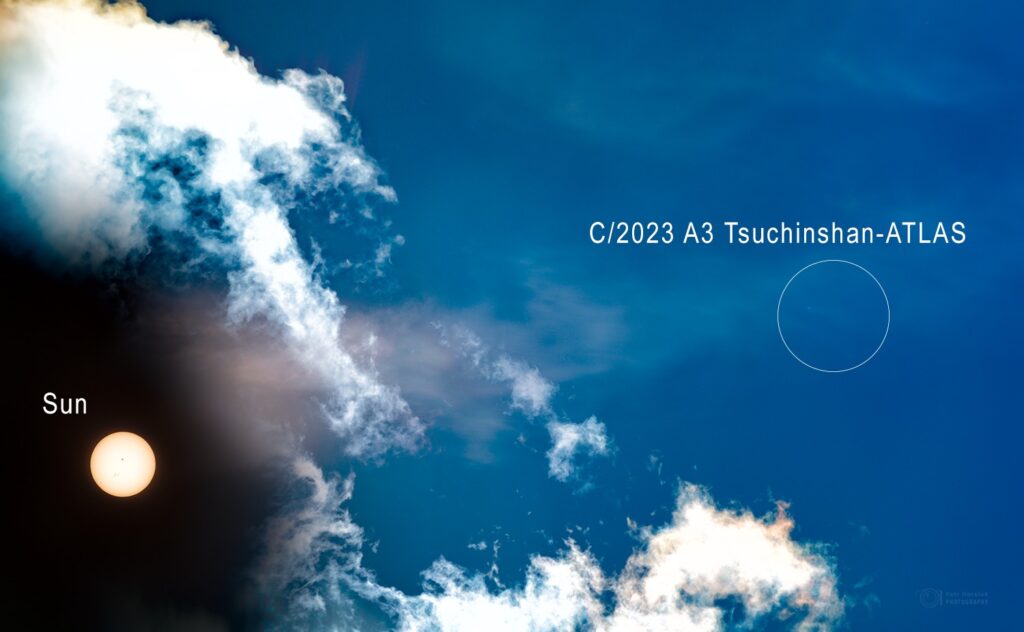
Though Tsuchinshan-ATLAS is not exactly impressive in daylight, its mere presence implies that, in a few days’ time, we might be able to see it in its full glory.
Under no circumstances should you attempt to watch the comet in close proximity to the Sun. Aiming any type of optical tool at the Sun is particularly dangerous. Even the smallest amount of sunlight that passes through binoculars or telescope lenses could cause irreversible eye damage.
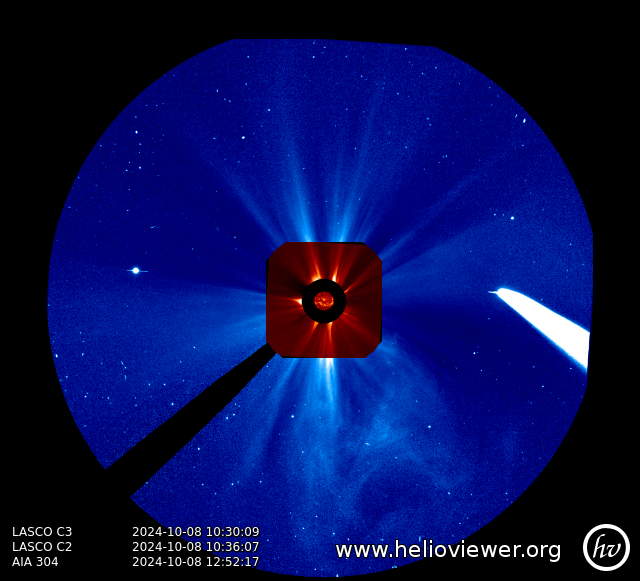
Will the Comet Get Brighter?
Considering the unpredictable nature of most comets, it’s impossible to say for certain how Tsuchinshan-ATLAS might change. That said, if we look at the data collected over the past weeks, we could still make reliable projections.
As seen in the image below, taken by Michael Jäger, Gerald Rhemann, and Dennis Möller on October 1, 2024, the comet’s brightness is truly impressive, given that it only had a magnitude of +2m at the time. It’s worth noting that, unlike the human eye, cameras can capture a wider range of the light spectrum. So at long exposures, the comet will always appear brighter, and its tail longer and more distinct.
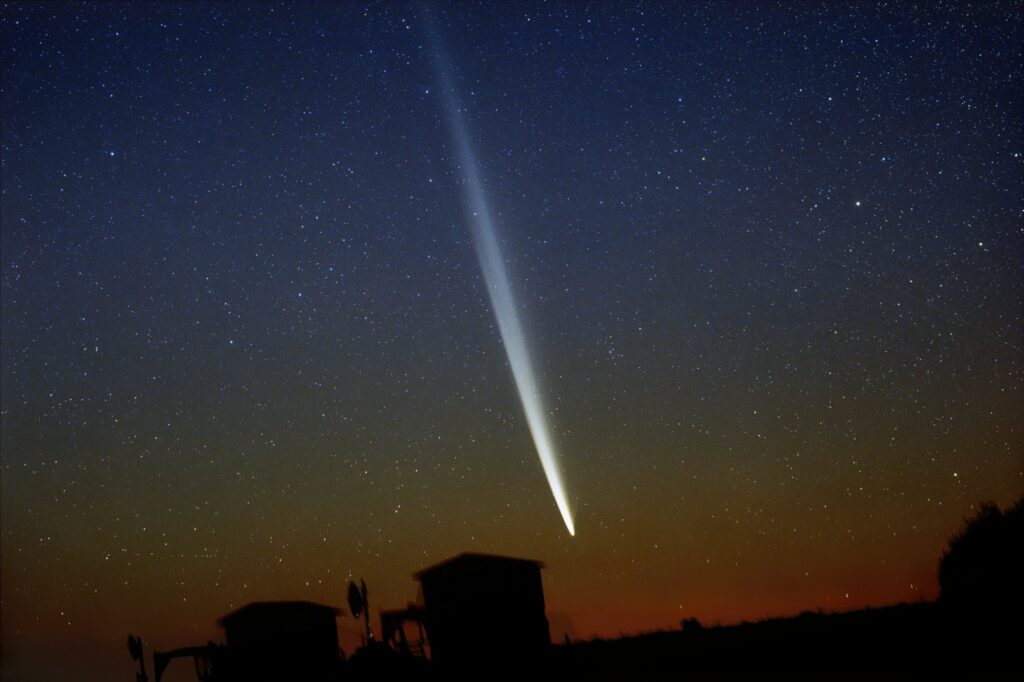
When our tailed guest was still only observable in the Southern Hemisphere and near the equator, it gave us the opportunity to study its brightness with relative precision. These observations proved that the comet was defying all pithy projections, as it grew brighter and did so at much higher rates.
So what does it mean for us Northerners as well as the observers in the Southern Hemisphere? Well, we can definitely count on C/2023 A3 to put on a stunning show as soon as it leaves the Sun’s spotlight. At the moment, both amateur and professional comet observers are caught in heated debates concerning the comet’s true brightness. But what exactly are they arguing about?
After all, we can’t use regular methods to estimate the comet’s luminosity due to its proximity to the Sun. A few years ago, Mieczyslaw Leszek Paradowski proposed a new method of determining cometary characteristics, namely with the help of SOHO imaging. Currently, the solar telescope puts the comet’s magnitude at a staggering -3,3m. If we were able to see it now, it would shine brighter than Venus. Many remain skeptical over this number, and most experts and amateur observers estimate the brightness to be somewhere between the -1,5m та -2m range, making it twice as bright as Sirius.
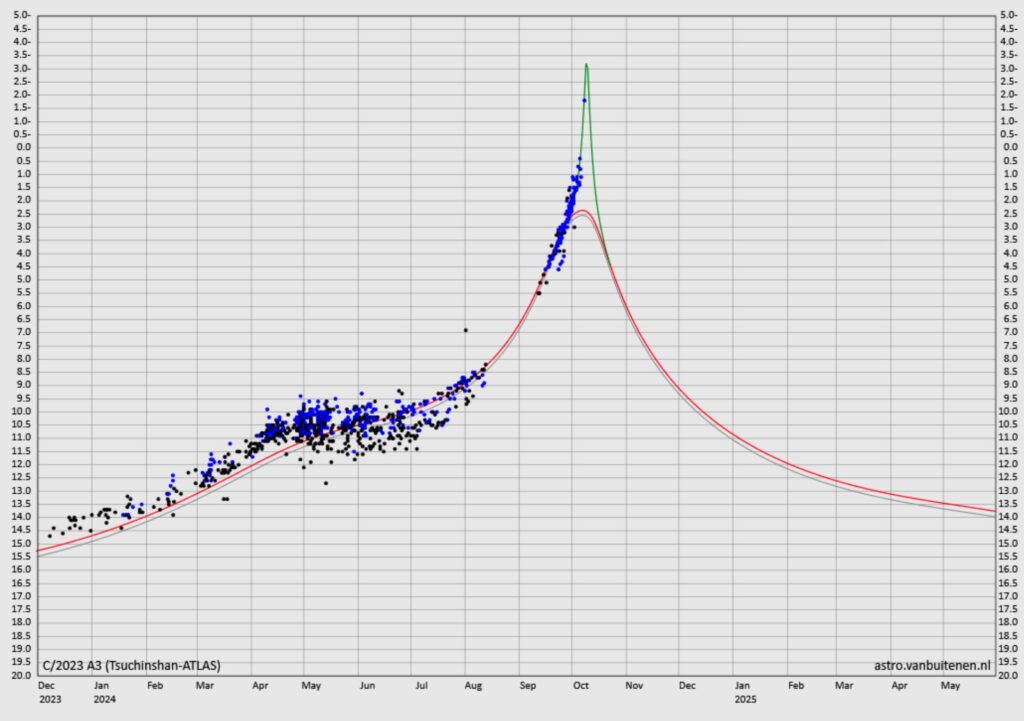
Scientists are optimistic about the projected brightness: when positioned directly between Earth and the Sun, the comet will briefly shine at the peak magnitude of -3,5m . And if Paradowski’s predictions are correct, it could become even brighter. This phenomenon, known as the direct scattering effect, occurs when sunlight disperses through the dust particles in the comet’s tail.
Luckily for us, this comet is brimming with these particles. Its dust tail had proved to be a captivating sight long before the comet passed perihelion (its closest orbital point to the Sun), after which the tail grew to the astounding 20°. On October 5, Terry Lovejoy, who is widely known for his discovery and research of comets, estimated the tail’s length at 35°! Even though cameras are able to see far more than we can, Terry was able to see the tail with his own eyes, noting that its length measured at least 25°.
It might seem ironic, but following October 9, the comet will actually begin to dim the closer it gets to Earth. Current projections suggest that on October 12, when this star adventurer reaches its closest orbital point to Earth at 71 million kilometers (44 million miles), its brightness will drop to a meager 0,0m. But even at that level, this comet will still outshine C/2020 F3 (NEOWISE) who adorned our night skies in the summer of 2020. It’s fair to say Tsuchinshan-ATLAS more than earned its title as one of the brightest comets of the 21st century.
How to Catch the Comet by the Tail
The comet might become visible in the evening sky as early as October 10-11 due to the light scattering, which can increase the comet’s brightness by a hundred (!) times. The scattering will still be in effect, though not as powerful as it was only the day prior. So if you really want to catch this long-awaited celestial guest, it’s best to arm yourself with a camera along with some patience—thirty minutes at the very least—and wait it out.
When comet-hunting, the first thing to consider is the western horizon. For better visibility, it’s best to find a spot with fewer obstructions and low light pollution. Given the recency of the autumnal equinox, the Sun sets almost exactly in the west, with the comet following on its heels. The ideal observation point would be somewhere with high elevation, preferably in the mountains. But what if there are no mountains nearby? If possible, look for dry locations, since bodies of water emit mist that lingers on the surface. This could pose a problem, considering that in the coming week, the comet will be flying fairly low over the horizon.
Bear in mind that the window of opportunity to observe Tsuchinshan-ATLAS will open shortly after sunset and last no more than 20 to 30 minutes, which is the comet’s average staying time on the horizon. It’s also possible that between October 10 and 11, the comet will be too dim to see with the naked eye, even in a clear sky. In that case, you’ll likely have to wait until nightfall. By that time, the comet’s head will dip below the horizon, leaving us with a truly surreal image: the lone tail slivering upwards at almost 90 degrees above the horizon. You can also try to catch the comet with a camera, but be sure to take pictures of the western horizon as soon as the sun sets — the lens will find what the eye can’t.
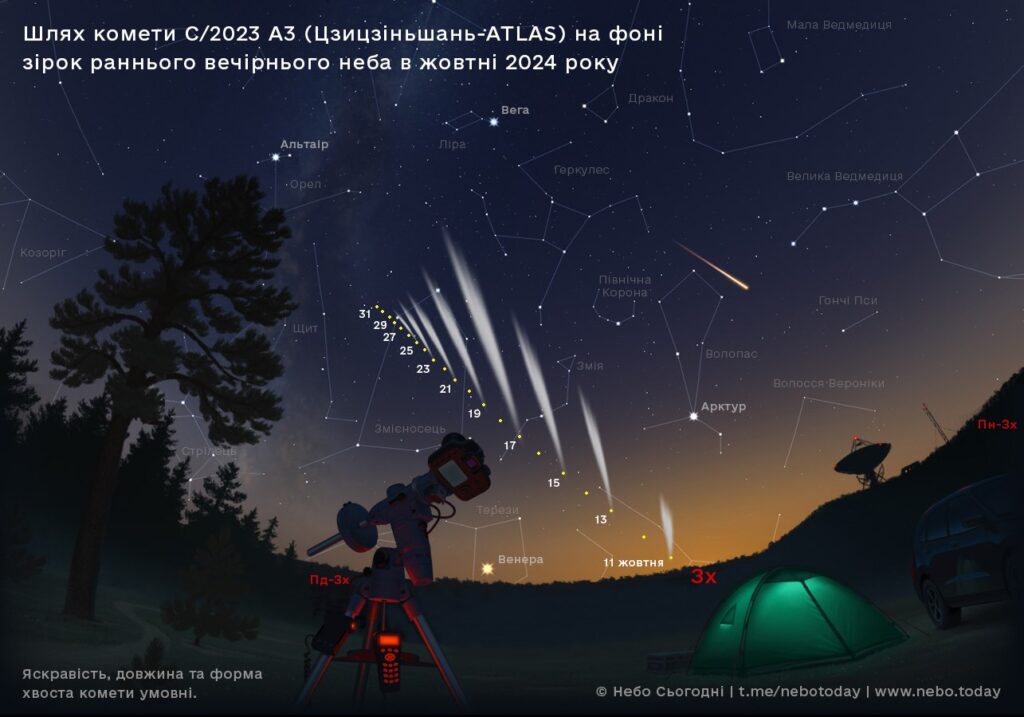
For those who prefer a more relaxed stargazing experience, we recommend starting your observations between October 12 and 13, though our advice generally remains the same: to be successful in your comet hunt, make sure your western horizon is unobstructed, and be ready to set up at the last rays of sunset. Another crucial detail here is the s speed. Remember that the comet moves pretty fast, while visibility conditions change on a daily basis.
On the one hand, C/2023 A3 (Tsuchinshan-ATLAS) will be rapidly moving away from the Sun, meaning that we get to observe it in the night sky for a bit longer. On the other hand, this trajectory will gradually diminish the comet’s brightness, cutting its tail shorter with each passing day.
So what are the best days to watch the comet? The most favorable conditions for observation will likely fall between October 12 and 15, as the comet will be visible to the naked eye. Starting on October 16, you will probably need binoculars or a small telescope. That said, we highly recommend following the weather forecast and plan your observations for the evenings when the atmosphere is at its clearest.
With that, we wish you clear skies, good observations, and truly unforgettable experiences!


